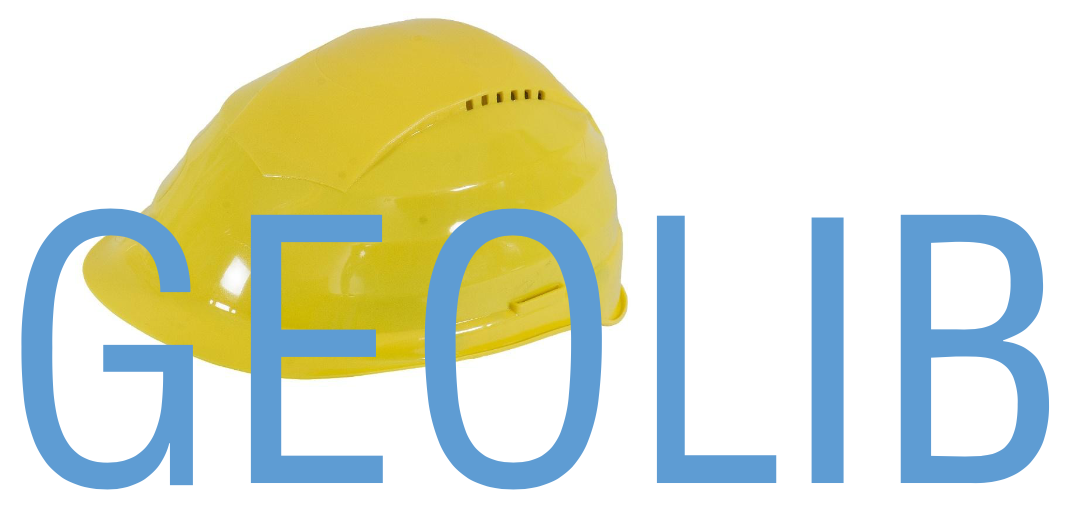Tutorial D-Foundations¶
The model data should be set. This can be done by initializing the class
DFoundationsModel.
df = gl.models.dfoundations.DFoundationsModel()
2. When using the python API for D-Foundations, it is very important to start the project with setting the calculation options and the model. If this is not done, certain project data can be unintentionally overwritten.
In this tutorial model options are set for bearing piles. The calculation model is in this case
BearingPilesModel.
model_options = gl.models.dfoundations.dfoundations_model.BearingPilesModel(
is_rigid=False, factor_xi3=9
)
calculation_options = gl.models.dfoundations.dfoundations_model.CalculationOptions(
calculationtype=gl.models.dfoundations.dfoundations_model.CalculationType.VERIFICATION_DESIGN,
cpt_test_level=-19.0,
)
df.set_model(model_options, calculation_options)
A CPT must be initialised using the class
CPT.
cpt = profiles.CPT(
cptname="DELFT1",
groundlevel=0.5,
measured_data=[
{"z": 0.0, "qc": 0.1},
{"z": -0.10, "qc": 0.5},
{"z": -0.20, "qc": 2.0},
{"z": -0.30, "qc": 3.0},
{"z": -0.40, "qc": 5.0},
{"z": -10, "qc": 1.0},
{"z": -15, "qc": 5.0},
{"z": -25, "qc": 5.0},
{"z": -30, "qc": 35.0},
],
timeorder_type=profiles.TimeOrderType.CPT_BEFORE_AND_AFTER_INSTALL,
)
After inputting the CPT the rest of the inputs for the profiles should be initialised.
To do that initialise the class Excavation.
excavation = profiles.Excavation(excavation_level=1.0)
The location of the CPT should also be defined.
location_cpt = profiles.Point(x=1.0, y=2.0)
Then the profile can be defined by initialising the class Profile.
The layers can be input as a list of dicts.
profile = profiles.Profile(
name="DELFT1",
location=location_cpt,
phreatic_level=-0.5,
pile_tip_level=-0.5,
cpt=cpt,
excavation=excavation,
layers=[
{
"material": "Clay, clean, stiff",
"top_level": 0.0,
"excess_pore_pressure_top": 0.0,
"excess_pore_pressure_bottom": 0.0,
"ocr_value": 1.0,
"reduction_cone_resistance": 0,
},
{
"material": "Clay, clean, weak",
"top_level": -0.2,
"excess_pore_pressure_top": 0.0,
"excess_pore_pressure_bottom": 0.0,
"ocr_value": 1.0,
"reduction_cone_resistance": 0,
},
{
"material": "Clay, clean, stiff",
"top_level": -0.3,
"excess_pore_pressure_top": 0.0,
"excess_pore_pressure_bottom": 0.0,
"ocr_value": 1.0,
"reduction_cone_resistance": 0,
},
],
)
df.add_profile(profile)
4. The soil can be intialised with the Soil and can be added to the model by using the function
add_soil().
soil = Soil()
soil.name = "test"
soil.mohr_coulomb_parameters.friction_angle = 20
soil.undrained_parameters.undrained_shear_strength = 20
df.add_soil(soil)
5. The type(s) of pile and its location(s) needs to be defined. The possible combinations for these options can be found in piles.
In this case the class BearingRectangularPile is initialised. In the following code block the location
of the pile is first initialised by calling the class BearingPileLocation.
# Add Bearing Pile
location = piles.BearingPileLocation(
point=Point(x=1.0, y=1.0),
pile_head_level=1,
surcharge=1,
limit_state_str=1,
limit_state_service=1,
)
After that two different dictionaries are initialised geometry_pile represents the geometry input and parent_pile all
the inputs that are related to the factors concerning the pile.
geometry_pile = dict(base_width=1, base_length=1)
parent_pile = dict(
pile_name="test",
pile_type=piles.BasePileType.USER_DEFINED_VIBRATING,
pile_class_factor_shaft_sand_gravel=1, # alpha_s
preset_pile_class_factor_shaft_clay_silt_peat=piles.BasePileTypeForClaySiltPeat.STANDARD,
pile_class_factor_shaft_clay_silt_peat=1, # alpha_s
pile_class_factor_tip=1, # alpha_p
load_settlement_curve=piles.LoadSettlementCurve.ONE,
user_defined_pile_type_as_prefab=False,
use_manual_reduction_for_qc=False,
elasticity_modulus=1e7,
characteristic_adhesion=10,
overrule_pile_tip_shape_factor=False,
overrule_pile_tip_cross_section_factors=False,
)
In that way the dictionaries can be used to initialise the class BearingRectangularPile.
pile = piles.BearingRectangularPile(**parent_pile, **geometry_pile)
The pile can be finally added to the model using the function add_pile_if_unique().
df.add_pile_if_unique(pile, location)
6. To run the model first the model needs to be serialised. To do that define an
output file name and call the function geolib.models.dfoundations.dfoundations_model.DFoundationsModel.serialize().
Finally the
executefunction can be called to run the model in D-Foundations.
